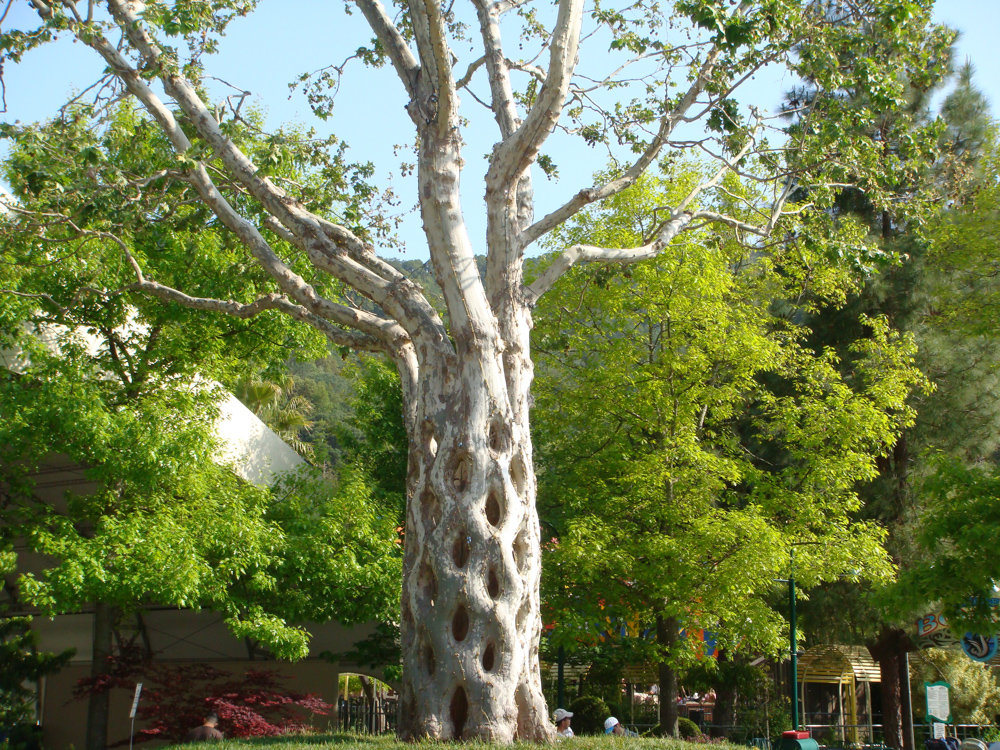Could trees become our ecological salvation? Not just sci-fi
Science-fiction has, once again, provoked the fertile spark for this story.
Harry Harrison, a prolific writer of the genre, wrote the fabulous Eden trilogy between 1984 and 1988.
The salient point for our purposes today was the presence of a second intelligent race descended from reptiles living on our Earth with a vastly different approach to the practicalities of life. Instead of using material science — as humans do — as a pathway to their primitive technology, they used plants and what we now call genetic engineering to create solutions for their material needs.
To see an analogous human methodology, we have to travel to the state of Meghalya in northeastern India bordered on the south and west by Bangladesh, and on the north by the Indian state of Assam. While average yearly rainfall in New York City is 45 inches, in Meghalaya it is 470 inches annually, making it the wettest place on Earth. Perhaps that accounts for the name Meghalaya, which in Sanskrit means “the abode of clouds.”
Seventy percent of the land is covered with a subtropical forest filled with rushing rivers and gorges. One of the trees growing there is the Ficus elastica, or Indian rubber tree plant. This tree has a multitude of secondary roots growing from the upper trunk dangling down to the soil while the growing trunk laps over the many large boulders found along the riverbanks.
The Khasi of central Meghalaya and the Jaintia people of eastern Meghalaya have found an ecologically friendly way of dealing with accessible foot passages in a tumbled terrain.
They have created “living bridges,” between 15 and 250 feet long, by gathering the still-growing roots of Ficus elastica trees growing near a gorge and training them to create a bridge by growing over and strengthening bamboo or wooden scaffolding. Sometimes trunks of the betel nut palm (Areca catechu) are cut down and hollowed out to provide a template for the roots to follow.
Finally, the roots can be gathered together, braided together and guided across the empty space.
The downside to all these processes is that it takes 15 to 30 years to create this type of bridge. But once finished, it can support the weight of 35 to 50 people simultaneously. It is thought that these bridges can last 500 years.
We have documentation regarding these bridges only since 1844 when Sir Henry Yule, a Scottish orientalist who spent many years in India and other Asian postings, described them.
Moving now to the United States, we have a little known art form called tree-shaping or living sculpture, created by manipulating trees into artistic forms as well as the occasional chair or other simple furniture piece.
I first encountered this process in conjunction with the name Axel Erlandson, who came with his parents at a young age from Sweden. A farmer, he had noticed inosculation occurring in his trees (the natural phenomenon of trees grafting onto one another), and began to investigate how to manipulate tree growth into fanciful designs as a hobby.
Over 40 years, he created more than 70 amazingly creative “sculptures.” After his death, 25 of them were moved to Gilroy Gardens in California.
John Krubsack actually preceded Erlandson’s work when he created a chair out of trained saplings, beginning the process in 1903 and completing it in 1914. There is no evidence that Erlandson was aware of his work.
However, there are several artists since Erlandson who have continued using this process. They include Dan Ladd (shaping gourds by growing them inside molds), Nirandr Boonnetr of Thailand, Richard Reames, and the Australians Peter Cook and Becky Northey — whose firm, Pooktre, is well known.
But is it possible to translate any of these processes into an ecological transformation for widespread human use? Already in 1926, German landscape engineer Arthur Wiechula wrote a book, “Developing Houses from Living Trees.” (The book was written in German and has not been translated. All the suggestions and concepts were entirely theoretical, but suggested that various grafting techniques could be used to “grow” homes.)
Mitchell Joachim, Lara Greden and Javier Arbona developed the Fab Hab House concept at the Massachusetts Institute of Technology. Using scaffolding, trees native to the building area would be trained to grow into an outer envelope that would become a “two-story, water-recycling and energy-efficient home.” Interior walls would continue to be the usual clay or plaster.
One obvious downside is the probable length of the growth process — five years.
Not only scientists are contemplating using growing trees as building material. In Germany, there is a design firm called Baubotanik (roughly translated as the “botanical building”) created by architect Ferdinand Ludwig. And in Israel, a group named Plantware, whose work is based on the concepts developed by Waisel and Eshel at Tel Aviv University, is exploring similar ideas.
Today’s ecological thinking is turning to trees as environmental saviors. Who knows how far this concept can be taken!
Have a thought or comment for Sura Jeselsohn? Email her at greenscenesura@gmail.com.






